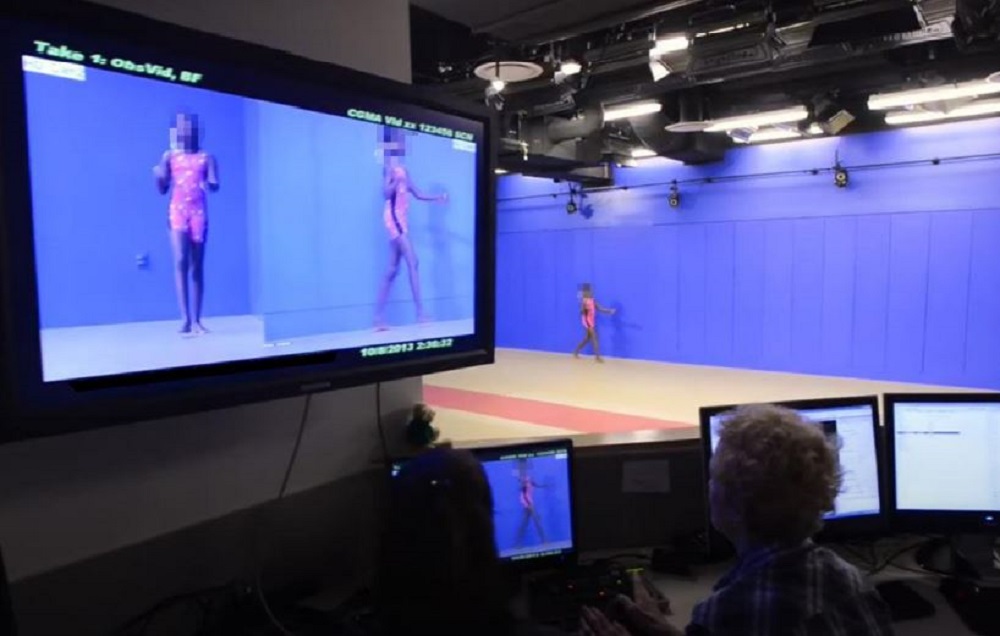A clinical gait and movement analysis lab at a children’s hospital evaluates patients with neuromuscular and musculoskeletal conditions, including cerebral palsy, spina bifida, brain or spinal cord injury, muscular dystrophies, hip and joint problems, balance disorders, brace or prosthetic device modifications and sports-related injuries.
This facility performs clinical movement analysis of patients undergoing treatment for their physical challenges.
The core measurements include multi-plane high-definition video, 3D motion kinematics (joint motion), 3D kinetics (joint force and power) muscle activity, and general walking measurements, comprised of walking speed, step length and gait symmetry.
The sources employed include multiple remote controlled 1080p60 cameras, an animation-grade motion capture system, ten force platform sensors embedded in the floor, a foot pressure mat, real-time dynamic electromyography (EMG) using wireless sensors, along with various other custom devices and software.
Technology Upgrades
The lab embarked upon a visualization technology upgrade to improve patient evaluation and diagnosis. For the last 14 years, the lab used RGB Spectrum’s SuperView multi-image display processor, which performed flawlessly and with field-proven reliability.
SuperView’s longevity and performance led the lab to choose RGB Spectrum’s more powerful Galileo video processor to power their new visualization system.
The Galileo processor was selected for its exceptional video processing performance, versatile support of a wide variety of input sources, and its 24/7 reliability.
The lab needed to deploy a processor that would preserve image fidelity, with precise depiction of the imagery, pixel-for-pixel, maintaining native resolution and aspect ratio, without any interpolation that could introduce artifacts and distortion.
The processor receives input feeds from two 1080p60 video cameras capturing multiple views of the moving patient, a real-time Electro Myogram (EMG), and annotation screens containing patient information.
The Galileo processor consolidates these visuals and data to display a correlated, multi-window view on a large screen for clinical movement analysis.
Equipment Benefits
Visuals and data sources can be displayed in windows of any size, anywhere on the screen. Operators can instantly switch inputs for presentation in customizable, preset display layouts for different types of patients or testing protocols.
Multiple sources of visual information are consolidated into a single image which is displayed, streamed and recorded.
To enhance the analysis, operators can crop regions of the camera videos and reassemble them to present associated views of the patient’s movements. Then specialists collaboratively view this information, comprised of all graphical and analytical information collected during the testing, for analysis and diagnostic purposes.











